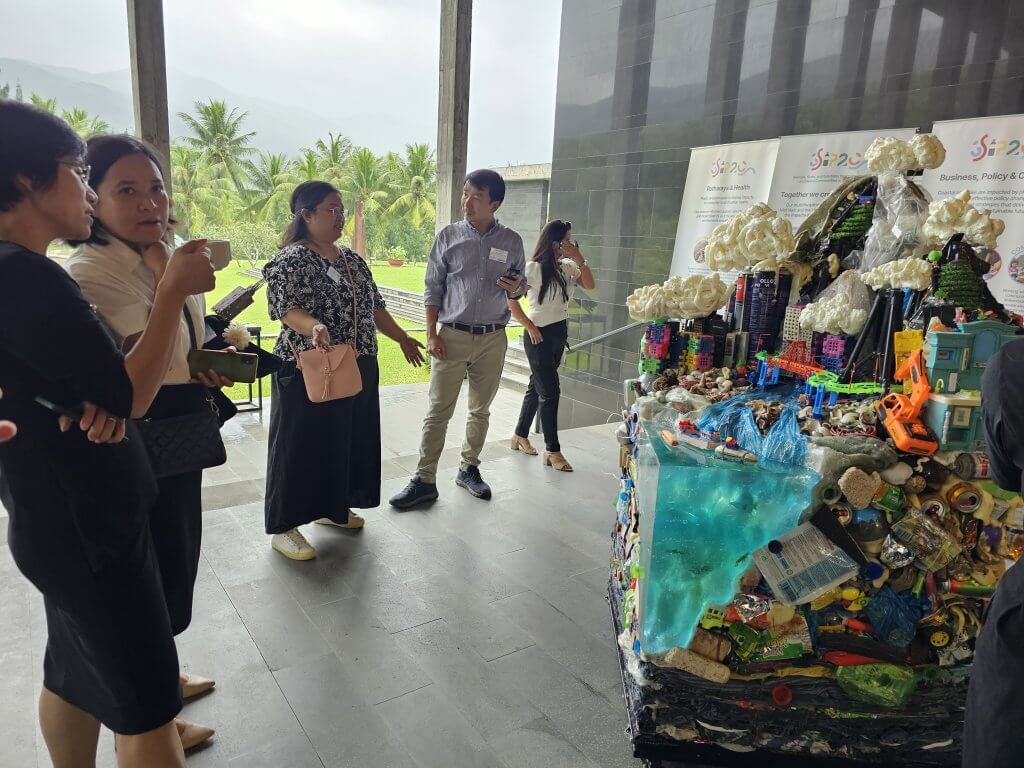Blog by Inna Yaneva-Toraman
In September 2023, the 3SIP2C project collaborated with Tohe, to produce a striking art piece that represented Nam Dinh Province’s shoreline. Tohe is a social enterprise based in Hanoi, which has many years of experience providing opportunities for disadvantaged children to learn, practice creativity, and experience artistic activities. Teaming up with Tohe, our team specialists in social science and playful learning designed an artwork that reflects the coastal scene in Nam Dinh. More information about Tohe here.

Aim of the Artwork
The aim of the artwork is to show the severity of the plastic issue in this area and how it affects both local communities and their environment. It also tries to convey how different places, people, and ecologies are linked by, and consequently impacted by, the movement of plastics through the rivers and ocean. The art piece was designed drawing on descriptive data about Nam Dinh and quantitative data collected from beach waste audits carried out at Giao Hai Beach by our team in March and October 2023. In this way, it aims to show not only how the area is littered with plastic waste but also to provide insights into the ratio of different types of plastic objects found on the beach.
The first display of the artwork took place between 27 November – 2 December 2023 at the 3rd Vietnam Conference on Earth and Environmental Science (iVCEES2023) at the International Centre for Interdisciplinary Science and Education (ICISE) in Quy Nhon, Vietnam. The art piece was allocated a central spot at the conference venue, where delegates can examine it and learn more about the issue and our research activities.
Nam Dinh Scene
In coastal provinces such as Nam Dinh (end of the Red River delta), there are multiple agricultural and fisheries activities close to each other. They are all connected by water through rivers, canals, and the ocean. Following the water flow from inland to the coast, one first sees the rice paddy fields, then extensive shrimp farms that are dotted with (semi)-intensive shrimp farms, followed by clam beds at the coast. Fishing boats traverse the coast, while further in the open ocean, one can see bigger vessels with more numerous crews. These bring to the shore a greater volume of catch collected over longer fishing trips.
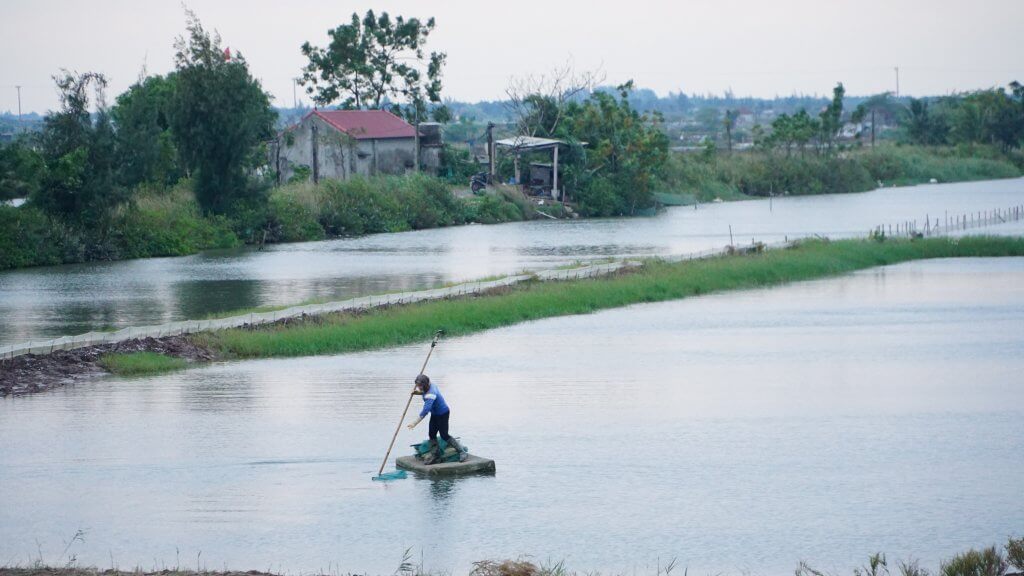
Nam Dinh Province is greatly affected by marine plastic pollution. Located at the mouths of the Red River, Nam Dinh’s beaches are severely polluted as the plastics that get trapped here come from both the inland and the ocean. Some leach into the rivers from residential and industrial areas up the river and travel to the bay. Others may have travelled a great distance with the ocean tides and currents, before washing up on the beach. There are also those plastics that have been discarded locally. Combined, all these flows leave Nam Dinh in piles and piles of plastics, affecting both the natural ecologies and local communities that depend on the land and sea.
The flow of plastics from both directions leaves Nam Dinh like a sandwich – plastics squished between the land and ocean. There are beaches like Giao Hai where the plastics have washed for many years and created layers upon layers of plastics. There are also mangrove forests at the mouth of the river, where plants and tree roots get entangled with plastics. In both places, the plastics are never static. They may flow back to the sea or river with the tides. They may be dislocated from the sand or mangrove roots with the storms and floods. They may break down into smaller pieces called microplastics and move with the rain, river, and sea.

Those same beaches are central to the everyday lives of local fishermen, farmers and others who live close by. It is on the beach where local fish sellers (mainly women) meet the fishers and collects their catch of fish, squid, and crab. Piling these onto plastic-fibered floating mattresses, and inside plastic baskets, bags, and Styrofoam boxes, the fishers bring these to the shore. From there, the women take the catch to the marketplace, where they are sold and placed again inside single-use plastic bags.
(See our blog on Giao Hai Beach waste audit)
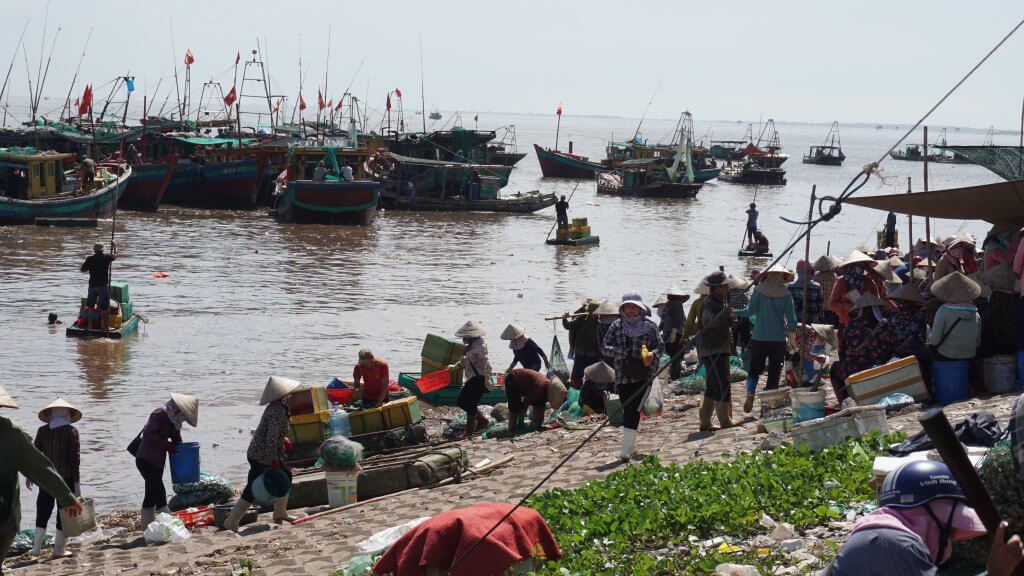
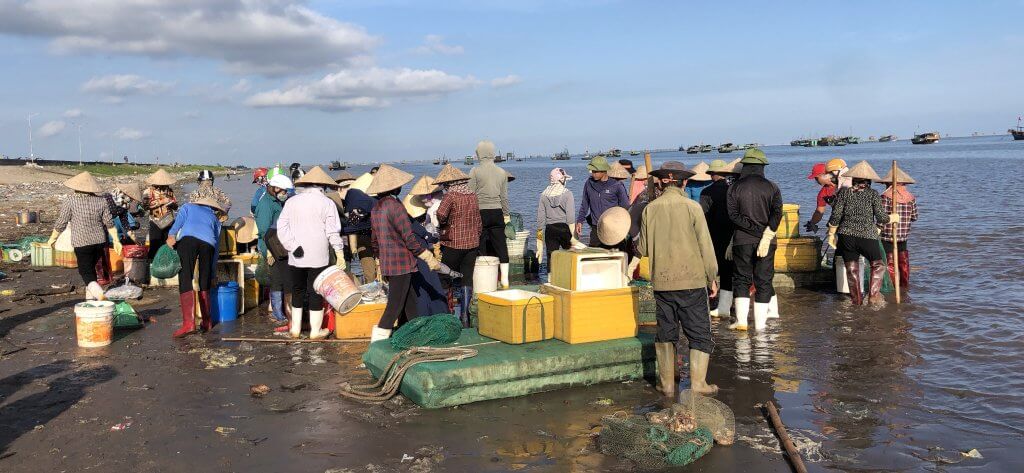
Struggle with Plastics
Dealing with plastics is part of everyday life in Nam Dinh – from collecting plastics that have leaked into their aquaculture ponds to detangling plastic bags stuck on boat propellers. Many aquaculture farmers use net barriers around their farms or on the sluice gates to prevent plastic waste from entering.
Communes located closer to the mangrove forests explain the difficulties of accessing and collecting the plastic waste tangled in the roots. Others who collect waste from the beach say that one day they clean it, but the next day they find new piles of plastics washed on it. They remark that if one walks the beaches, they will not find any plastics of value – that is, those that can be reused or sold for recycling – because local people had already collected the valuable plastics. All that is left, according to them, is waste that cannot be sold for recycling.
However, the plastic waste that is left on the beaches can break down into microplastics and enter the waterways or other living things. It can become a microcosm of its own with microscopic lifeforms and pathogens attaching themselves onto it. When aquatic animals – those same fish, clam, crab, and squid that sustain livelihoods in Nam Dinh – ingest these microplastics they may suffer disease or die, affecting both local lives and entire ecosystems.
Art and Science
Tohe’s artists designed a striking art piece that depicted the Nam Dinh scene. They used the information above provided by our scientists and they attended the second beach waste audit at Giao Hai Beach carried by the 3SIP2C team and Phenikaa University undergraduate students. The art piece was made using plastic waste and other solid waste featuring plastic components that are found on Giao Hai Beach. It aimed to offer a realistic proportion of the different types of plastic waste drawing from our beach waste audit data.
The artwork design developed over several discussions and feedback sessions between Tohe and the 3SIP2C teams. Two interactive elements were incorporated into the piece that aimed to draw the viewers closer and invite them to think about the extent of the plastic issue. A series of questions were displayed along with the information about the art. These questions also prompted the viewers to use a looking glass attached to the art piece to take a closer look inside the ocean where glitter and smaller particles of plastics were dispersed to simulate the microplastics in the water. We also provided a visitor book where we asked viewers to write down their thoughts about the art by addressing some of our questions.
Presentation and Reception
The first display took place at the place between 27 November – 2 December 2023 at the 3rd Vietnam Conference on Earth and Environmental Science (iVCEES2023). The artwork was placed at a prime location at ICISE, where conference delegates could view it between panel sessions.
The 3SIP2C team also organised a conference side event on the evening of 29th November. At this event, our delegates displayed several of our research engagement activities through posters, photo slides, coconut painting activity, and board games. The art piece gathered a lot of attention from the event attendees and offered a great conversation starter where scientists from different fields shared their thoughts on the plastic challenge in coastal Vietnam.
The artwork will remain at ICISE until the end of 2023 where it will be displayed at the following conferences and workshops. Between 16-19 December the conference centre will host the Vietnam Symposium of Development (VSOD) where the 3SIP2C co-lead Dr Ngo Thi Thuy Huong will present the artwork to symposium participants.
Information Accompanying the Artwork
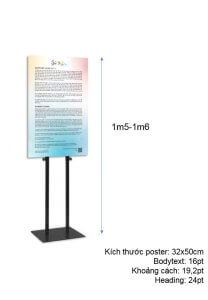
Marine plastic pollution is a global challenge. It has huge negative impacts on human and animal health and the livelihoods of coastal communities. Like many coastal areas in the world, the Nam Dinh Province, in the Red River estuary, Viet Nam is heavily polluted with plastic debris. One of the worst affected areas is Giao Hai Beach where plastic waste from the land, down the river and from the ocean, becomes trapped. Over the years this has led to layers upon layers of plastic waste building up on the beach. Despite this pollution, Giao Hai Beach remains central to the everyday lives of local fishermen, farmers and others who live close by.
Once created, plastic is moved around, processed and transformed for decades to centuries. From manufacturers to markets, plastic is sold and bought, used, repaired, recycled, reused, dumped, buried, and burned. These days, plastic can be found in almost everything we own. However, over time plastic breaks and degrades into ever-smaller pieces, which can then be moved around by rain, wind, water currents and waves. While some plastic debris becomes trapped on beaches such as Giao Hai, sometimes plastics are eaten and enter the food chain – which may ultimately lead back to us!
The project “Sources, Sinks, and Solutions for the Impact of Plastics on Coastal Communities in Viet Nam” (3SIP2C) seeks to better understand and reduce the impacts of plastics on coastal communities.
This artwork illustrates both the living environment of Nam Dinh and the extent of plastic pollution on Giao Hai Beach – you can see the proportions of different plastic types found on Giao Hai Beach in 2023.
Can you recognise these items? Use the looking glass to get a closer look!
Can you guess where the plastics might have originally come from?
We invite you to share your thoughts and suggestions about the artwork in the visitor book. Can you think of ways to reduce the waste on Giao Hai Beach? What about your local beach?
We would love to hear from you!
For more information about the 3SIP2C project and to contact us, check out our website at www.3sip2c.com or www.lessplasticvietnam.com
